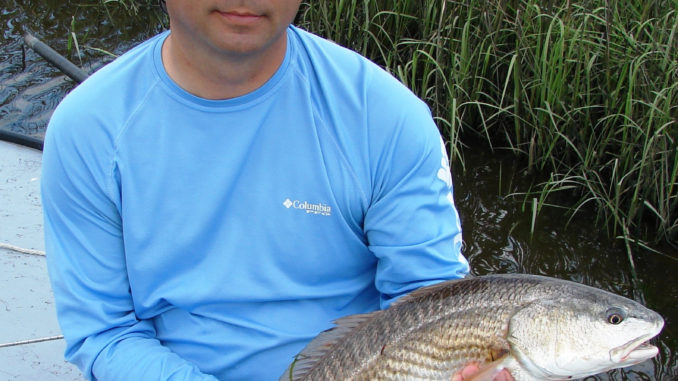
Using crabs as bait will turn on late-winter puppies
Winter typically begins to break in late February or early March, and the fish notice and appreciate more sunshine and warmer weather as much as fishermen. Along North Carolina’s southernmost coast, it’s puppy drum that get active and start to feed.
Between the Shallotte River and the South Carolina border, fishermen have three primary places to look for red drum: in pools that have oyster rocks trailing down into them at low tide back in creeks, around creek mouths that run into larger creeks or the Intracoastal Waterway, or moving into shallow marsh ponds and flooded grass.
Red drum have fed around oyster rocks for several months and will continue to look for food there until bait spreads out throughout the creeks and marsh. They can grub crabs, shrimp and some minnows out of holes and crevasses in the oysters and make a meal.
The first baitfish begin to move in and out of the marsh creeks in March, and once they begin, drum will be watching creek mouths, also. The best time is primarily on the falling tide, but drum often hold around the creeks for an hour or two of the rising tide to see what it carries back in.
Mark Stacy of Ocean Isle Fishing Charters (www.oceanislefishingcharters.com) said artificial baits will usually work well around the oysters and creek mouths, as bait is in specific places and moving. Because the water is still cool, he suggests using smaller baits and fishing a little slower — not as slow as the dead of winter but not as quickly as in May or June. Most fishermen will usually do better in this situation with scented soft plastics or soft plastics with scent added.
Baitfish and crabs will begin to spread out after the weather warms sufficiently. Fish begin to work their way into the marsh ponds and flooded grass to feed, and crabs are one of their favorite foods.
Stacy specializes in catching these early drum in the marshes behind Ocean Isle and Sunset Beaches. The actual timing of the bite depends on warmer, sunny days becoming consistent, which is typically by the end of the first week of March.
Stacy said the action begins as soon as the tide starts rising. Redfish know the water in the marsh will be getting deeper, so they begin working their way to the areas that should be holding food. He has seen them in water so shallow their backs were exposed as they swam and wallowed their way into the shallow marsh to feed.
Stacy’s secret weapon for these early reds is fresh crabs for bait.
“There is something special about the oil in crabs,” Stacy said. “It spreads through the flooded marsh like nothing else. You can usually catch a few using pieces of mullet and menhaden, but the scent of crab really turns them on, and they don’t hesitate to track it down. There is no doubt drum have the best noses in the marsh, and those noses are tuned to crab.”
A Carolina rig and circle hook baited with a piece of crab is all you need. Any nearby redfish will find it from downcurrent. Stacy fishes a spread of two to four lines in open water and rarely waits very long for the action to begin.




